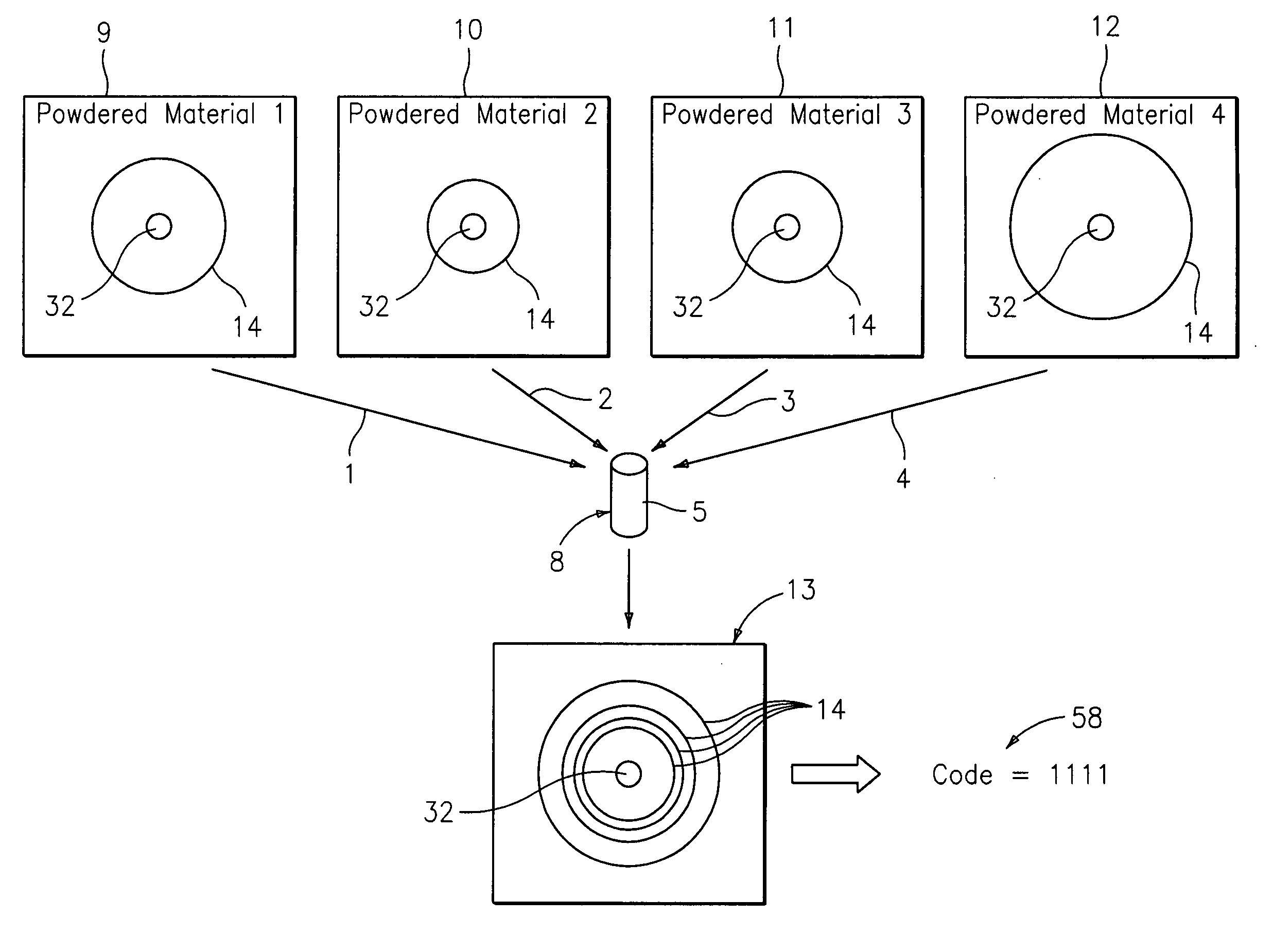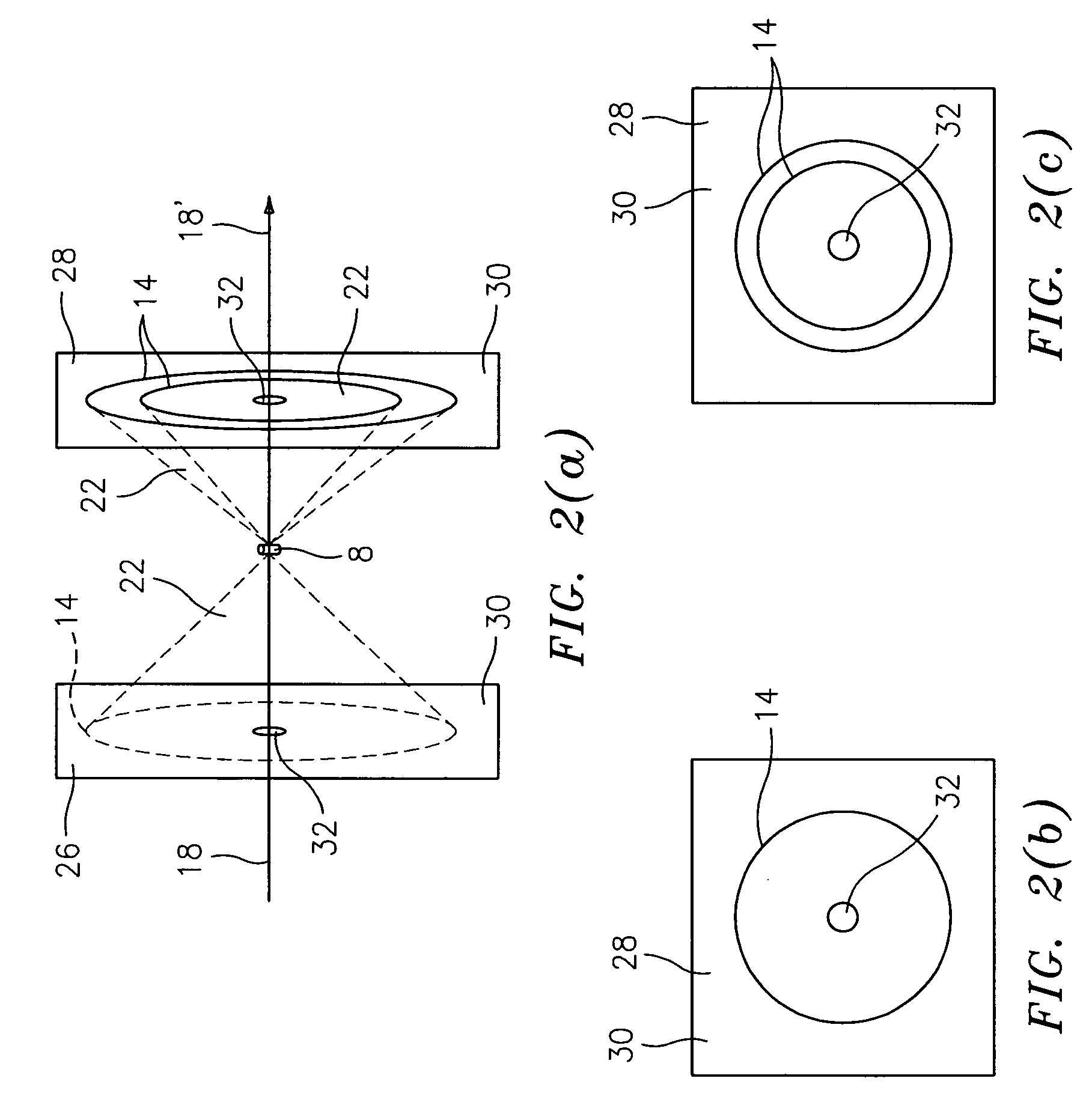Method and apparatus for labeling using optical identification elements characterized by X-ray diffraction
a technology of optical identification elements and labeling methods, applied in the field of optical identification, can solve the problems of insufficient technology for uniquely labeling or identifying items, insufficient different codes, and insufficient existing technologies for certain applications,
- Summary
- Abstract
- Description
- Claims
- Application Information
AI Technical Summary
Benefits of technology
Problems solved by technology
Method used
Image
Examples
Embodiment Construction
[0038] Referring to FIG. 1, an encoded optical identification element (element) 8 for identifying an item is shown. The optical identification element 8 is a composite structure formed from one or more materials 1-4 embedded in a binder material 5. In the example shown in FIG. 1, the optical identification element 8 is in the shape of a bead, and four different materials 1-4 are embedded in the binder material 5 to form the bead. As will be described in further detail hereinafter, any number of materials may be used, and the optical identification element 8 may take any convenient shape.
[0039] Each of the materials 1-4 provides a unique X-ray diffraction pattern, as indicated at 9-12 respectively, when illuminated by an X-ray beam. In the embodiment shown, the X-ray diffraction patterns 9-12 are rings 14, each of which are portions of a Debye-Scherrer diffraction pattern.
[0040] When the materials 1-4 are embedded in the binder material 5 to form the optical identification element ...
PUM
 Login to View More
Login to View More Abstract
Description
Claims
Application Information
 Login to View More
Login to View More - R&D
- Intellectual Property
- Life Sciences
- Materials
- Tech Scout
- Unparalleled Data Quality
- Higher Quality Content
- 60% Fewer Hallucinations
Browse by: Latest US Patents, China's latest patents, Technical Efficacy Thesaurus, Application Domain, Technology Topic, Popular Technical Reports.
© 2025 PatSnap. All rights reserved.Legal|Privacy policy|Modern Slavery Act Transparency Statement|Sitemap|About US| Contact US: help@patsnap.com



